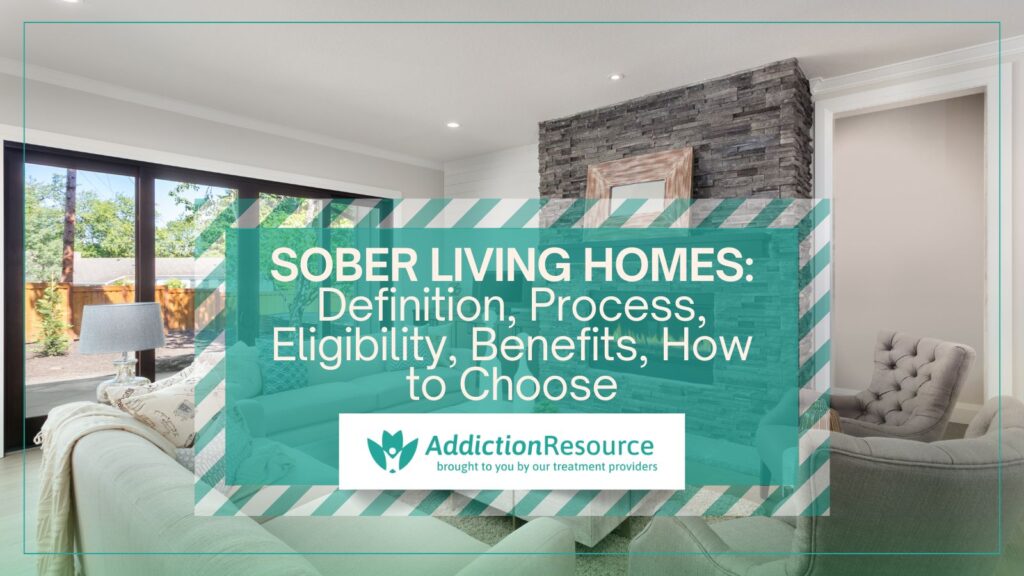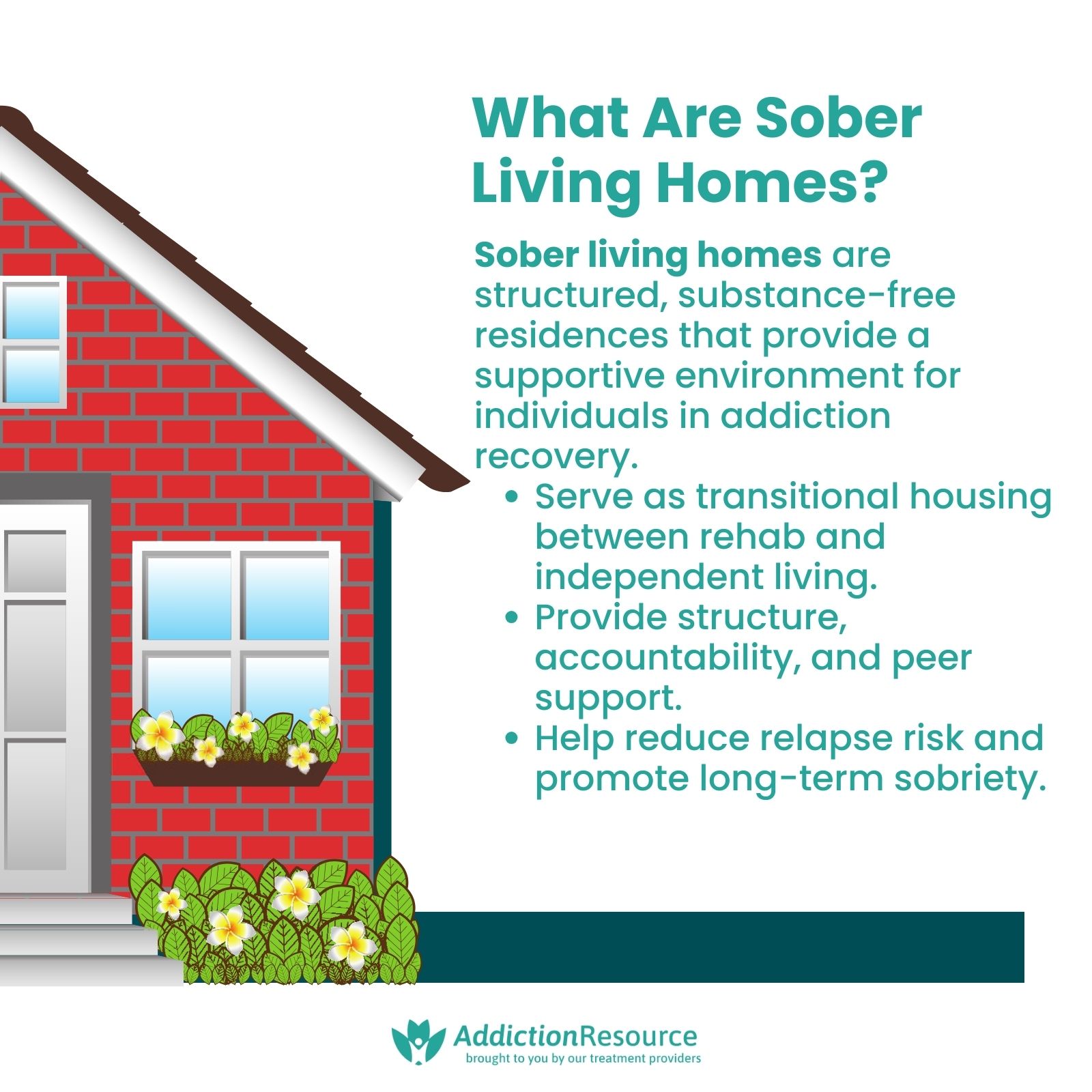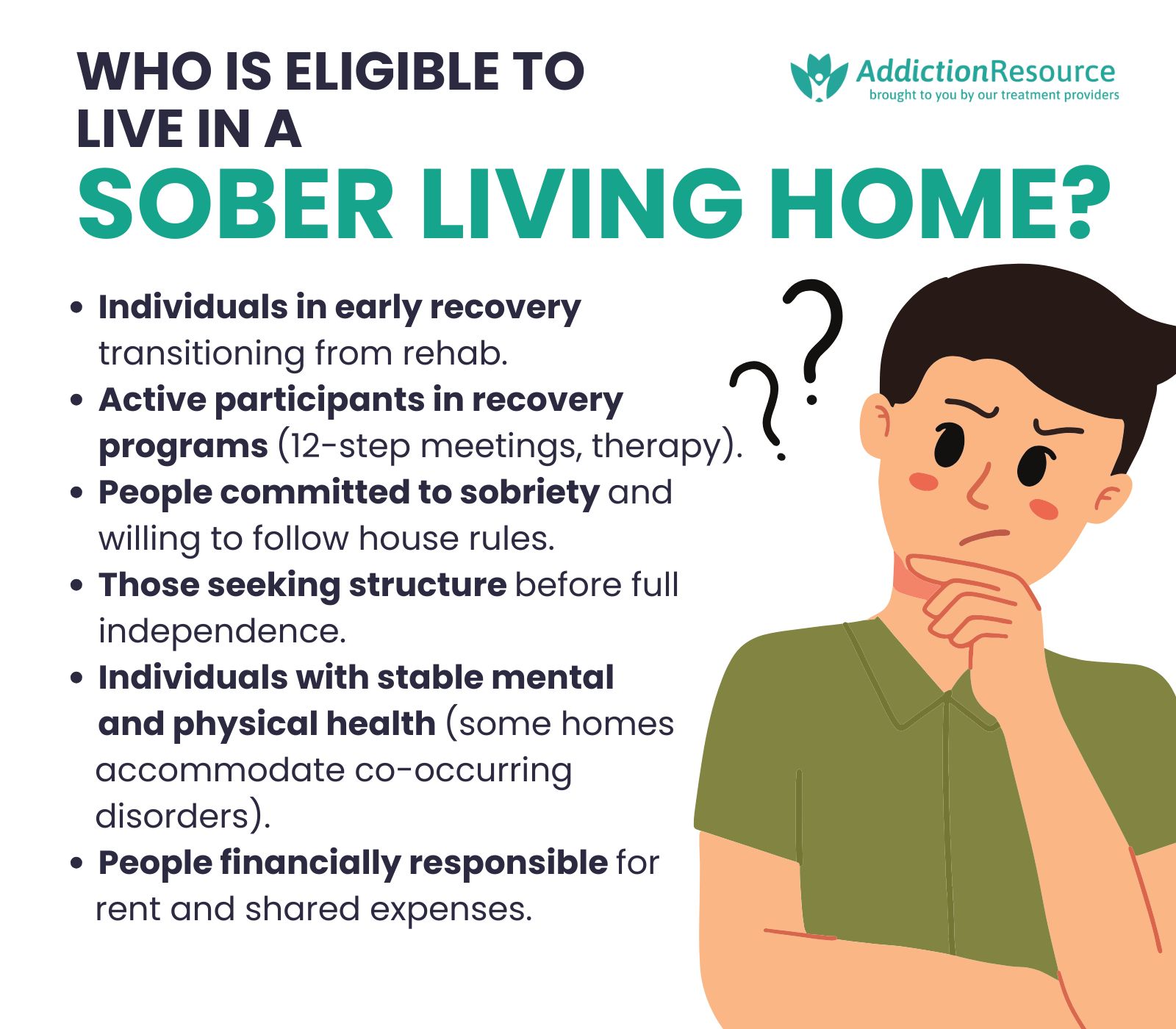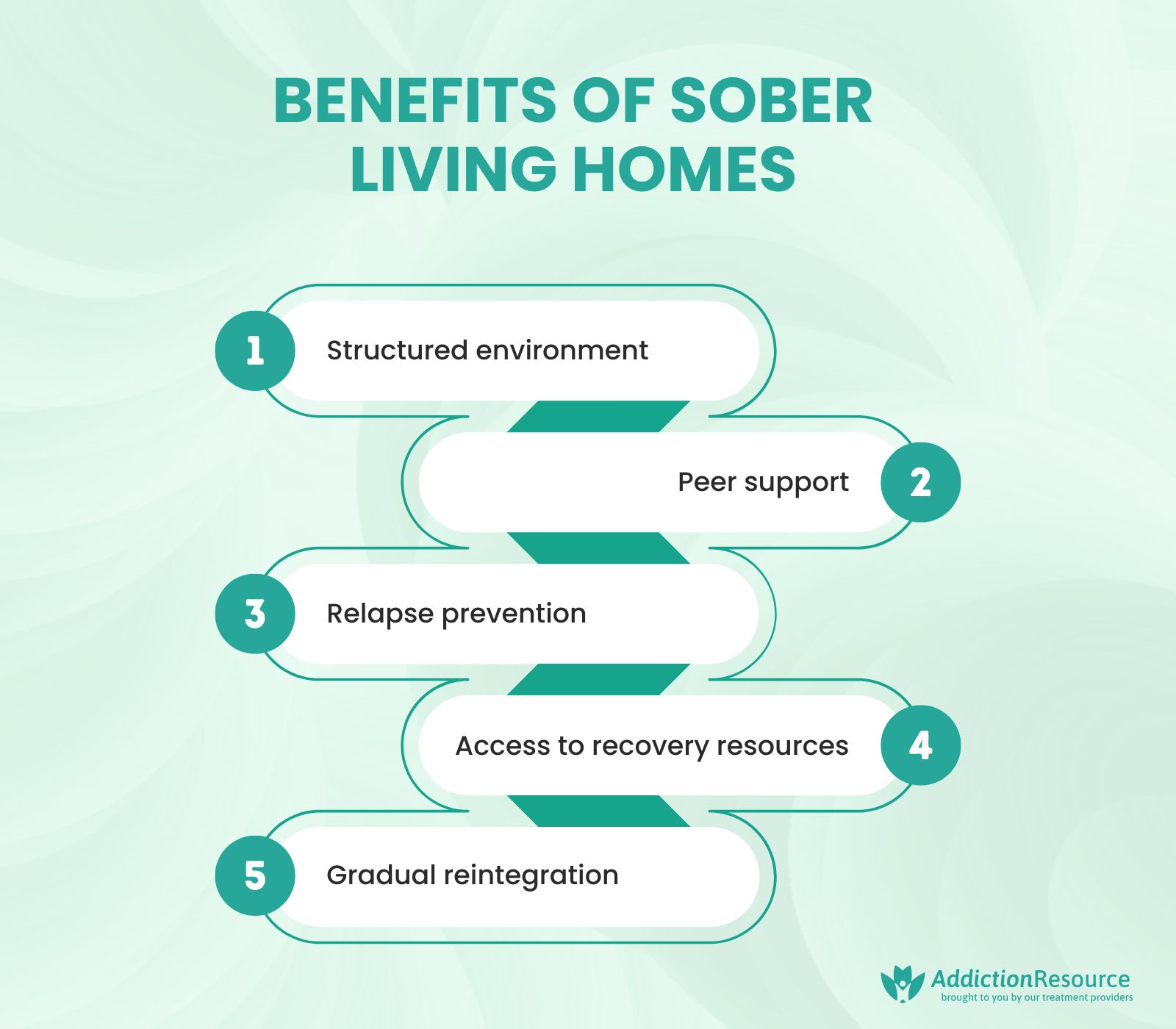
Sober living homes are structured, substance-free residences that provide a safe and supportive environment for individuals recovering from addiction. They serve as transitional housing for those leaving inpatient treatment or intensive rehabilitation programs, offering a space that encourages continued sobriety and long-term recovery. According to the 2021 National Survey on Drug Use and Health, approximately 43.7 million Americans aged 12 or older needed treatment for addiction to alcohol, nicotine, or other drugs showing the need for transitional care between rehab and real life.
These homes operate by creating a stable and organized living environment that emphasizes accountability, personal growth, and peer encouragement. Residents are required to follow house rules, participate in recovery-related activities, and contribute to household upkeep. This balance of structure and independence helps individuals develop self-discipline while maintaining a sober lifestyle.
Sober living homes are particularly beneficial for those in early recovery, individuals with co-occurring disorders, or those who need additional support before transitioning to full independence. The structure and accountability provided by these residences help reduce the risk of relapse and support individuals as they adjust to sober living.
When choosing a sober living home, important factors to consider include location, cost, available recovery resources, and accreditation. Ensuring that a home has a strong reputation and offers the necessary structure and support significantly impacts long-term recovery success.
The benefits of sober living homes include increased accountability, peer encouragement, and improved recovery outcomes. These homes provide a secure and structured setting where individuals focus on rebuilding their lives, reinforcing sobriety, and preparing for independent living.
What Are Sober Living Homes? 
Sober living homes are residences for individuals recovering from drug or alcohol addiction, offering a structured, substance-free environment that reinforces long-term sobriety. These homes function as transitional housing, providing support and accountability for those leaving inpatient treatment or other intensive rehabilitation programs.
Unlike inpatient rehab centers, sober living homes do not provide 24/7 medical care but establish rules, structure, and peer support to maintain a sober lifestyle. Residents follow house guidelines, attend recovery-related activities, and contribute to household responsibilities. These homes ensure a balance between independence and accountability, helping individuals build routines that promote lasting recovery. The Substance Abuse and Mental Health Services Administration (SAMHSA) reports that in 2019, only about 4.2 million people aged 12 or older received any substance use treatment, indicating a significant gap between those needing and receiving care.
Sober living homes operate under different models, with some privately owned and others managed by treatment organizations or recovery networks. They provide drug testing, peer mentorship, and access to outpatient counseling or therapy. The focus remains on creating a stable and supportive environment that helps individuals transition into independent living while maintaining sobriety.
What Rules Do Sober Living Homes Follow?
Sober living homes follow clear rules to maintain a structured, drug- and alcohol-free environment. These rules promote accountability, responsibility, and long-term sobriety. Consequences for breaking rules vary but include warnings, increased supervision, or eviction.
The rules that sober living homes follow include:
- Sobriety enforcement: No drug or alcohol use, with regular testing
- Meeting attendance: Required participation in 12-step programs or therapy
- Curfews and house schedules: Set times for returning home and structured activities
- Chores and responsibilities: Shared household duties and upkeep
- Financial accountability: Rent and utility payments made on time
- Respect and conduct: No violence, stealing, or disruptive behavior
How Do Sober Living Homes Operate?
Sober living homes operate by providing a structured environment where residents support each other in recovery. These homes bridge the gap between inpatient treatment and independent living by offering peer accountability and structured daily routines. According to the Journal of Substance Abuse and treatment SLHs have been shown to improve recovery outcomes when utilized in conjunction with 12-step programs.
Sober Living Homes operate in the following ways:
- Communal living: Residents share space and responsibilities
- House leadership: Managed by a house manager or senior residents
- Support services: Access to outpatient programs, counseling, and job assistance
- Personal development: Encourages employment, education, and goal setting
- Accountability structure: Enforces house rules and recovery-focused expectations
What Is the Daily Routine in a Sober Living Home?
The daily routine in a sober living home is designed to reinforce accountability, independence, and long-term sobriety. These homes are peer-led, meaning residents support each other while following house rules and maintaining personal responsibilities. The routine includes structured activities, recovery-focused commitments, and personal development tasks that help individuals transition into independent living.
Here is a typical routine:
- Morning routines: Wake-up time, personal hygiene, and household chores
- Group meetings: 12-step programs, therapy sessions, or peer check-ins
- Work or school commitments: Employment, education, or volunteer activities
- House responsibilities: Cooking, cleaning, and maintaining a structured environment
- Exercise and wellness activities: Fitness, meditation, or outdoor recreation
- Evening curfews: Set return times to maintain structure and accountability
- Personal reflection and relaxation: Journaling, reading, or unwinding before bed
Who is Eligible to Live in a Sober Living Home?
The people eligible for sober living include those who have completed treatment and are continuing their sobriety and recovery journey. Eligibility varies by facility, but common requirements include:
- Individuals in Early Recovery: Those who have recently completed inpatient treatment or detox and need continued support.
- Active Participants in Recovery Programs: Residents are required to attend 12-step meetings, therapy, or outpatient programs.
- People Committed to Sobriety: Individuals must agree to abstain from drugs and alcohol and follow house rules.
- Those Seeking a Structured Living Environment: Residents must be willing to follow curfews, complete household responsibilities, and contribute to a peer-led community.
- Individuals with Stable Mental and Physical Health: While some homes accommodate dual diagnosis, residents should be able to manage their condition without intensive medical supervision.
- People Capable of Financial Responsibility: Residents typically pay rent and contribute to shared household expenses.
Are Co-occurring Mental Health Disorders Managed in Sober Living Homes?
Yes, sober living homes accommodate individuals with co-occurring mental health disorders, but they are not medical facilities and do not provide intensive psychiatric care. Many homes encourage residents to continue therapy, take prescribed medications, and attend outpatient mental health programs. However, those requiring 24/7 medical supervision, crisis intervention, or specialized psychiatric treatment needs a dual diagnosis treatment center rather than a sober living home. The level of mental health support varies by facility, so individuals with co-occurring disorders should confirm whether a specific home offers the appropriate structure and resources.
Can You Visit Someone in a Sober Living Home?
Yes, you can visit someone in a sober living home, but visitation rules vary by facility. Most homes allow visits to support residents’ recovery while enforcing strict guidelines to maintain a safe, substance-free environment. Common rules include scheduled visiting hours, pre-approval of visitors, and restrictions on bringing alcohol or drugs. Many homes require visits to take place in common areas rather than private rooms to ensure accountability. Guests must follow house rules and respect curfews to avoid disrupting the structured environment. These policies help create a supportive atmosphere while prioritizing residents’ sobriety and well-being.
How Long Can You Stay in a Sober Living Home?
The amount of time you can stay in a sober living home typically ranges from 90 days to 18 months, depending on individual needs, recovery progress, and the home’s policies. While no strict time limit applies, most residents remain long enough to establish stability, secure employment, and develop essential coping skills before transitioning to independent living. The duration of stay is influenced by factors such as personal recovery goals, financial stability, available support systems, and adherence to house rules. Some homes follow structured programs with recommended timelines, while others provide flexible stays based on individual progress.
What Are the Benefits of Sober Living Homes?
The benefits of sober living homes include a structured environment, peer support, and relapse prevention, all of which contribute to long-term sobriety. These homes act as a bridge between rehab and independent living, offering stability, accountability, and ongoing recovery support. Individuals who transition directly from rehab to independent living face higher relapse rates compared to those who stay in sober living homes, where structured guidance significantly improves recovery success.
The benefits of sober living include:
- Structured environment: Sober living homes establish daily routines, curfews, house meetings, and assigned responsibilities, reinforcing discipline and accountability. This structured lifestyle reduces relapse risks by promoting healthy habits and long-term stability, as highlighted by research on the importance of social support in recovery populations.
- Peer support and community: Living alongside others in recovery fosters camaraderie, shared motivation, and accountability. According to the National Institute on Drug Abuse (NIDA), strong social support networks significantly improve recovery outcomes, reducing isolation and increasing the likelihood of sustained sobriety.
- Relapse prevention: Sober living homes maintain a strict drug- and alcohol-free environment, minimizing exposure to triggers and negative influences. Research indicates that individuals who transition directly from rehab without sober living support face relapse rates as high as 60%, while those who stay in structured sober homes experience significantly lower relapse rates due to continued guidance and support.
- Access to recovery resources: Many homes require or encourage participation in 12-step meetings, therapy, or outpatient counseling, equipping residents with essential tools for managing cravings, handling stress, and preventing relapse in real-world situations.
- Gradual reintegration into society: Unlike inpatient rehab, sober living homes allow residents to work, attend school, and rebuild personal relationships while maintaining a supportive environment. This gradual transition into independence helps individuals regain financial stability and life skills without the immediate pressures of returning to an unstructured setting.
What Are the Success Rates of Sober Living Homes?
The success rates of sober living homes are notable in supporting individuals recovering from substance use disorders. According to a study published in the Journal of Psychoactive Drugs, residents in certain sober living environments showed significant improvements in abstinence rates over time. Specifically, abstinence rates increased from 11% at baseline to 68% at both 6 and 12 months, before slightly decreasing to 46% at 18 months. Another group saw improvements from 20% at baseline to 40% at 6 months, 45% at 12 months, and 42% at 18 months.
What Happens After Leaving a Sober Living Home?
After leaving a sober living home, individuals transition to independent living, applying the skills and coping mechanisms developed during their stay to maintain sobriety. This period involves increased personal responsibility, such as securing employment, managing finances, and establishing a stable living environment. Continued participation in support networks, including 12-step programs or counseling, is crucial to sustain recovery. Building a robust support system of family, friends, and peers further reinforces long-term sobriety. According to the National Institute on Drug Abuse (NIDA), relapse rates for substance use disorders are between 40% and 60%, similar to those of other chronic diseases like hypertension or asthma. These statistics underscore the importance of comprehensive, ongoing support systems to help individuals maintain long-term recovery.
What Happens if You Relapse in a Sober Living Home?
Relapsing in a sober living home results in specific consequences, as these environments enforce strict no-drug and no-alcohol policies to maintain a supportive atmosphere. Responses to relapse includes temporary suspension, increased supervision, mandatory attendance in additional treatment programs, or eviction, depending on the home’s policies. According to a study published in the Journal of Psychoactive Drugs, individuals who transitioned directly from rehab without sober living support faced relapse rates as high as 60%, whereas those utilizing sober living homes experienced significantly lower relapse rates due to continuous guidance and structured support. These measures aim to uphold the community’s commitment to sobriety and encourage individuals to recommit to their recovery journey.
How to Choose the Right Sober Living Home?
To choose the right sober living home, individuals should consider factors that ensure a safe, structured, and supportive environment that aligns with their recovery goals. Researching a home’s reputation, policies, and available resources is essential for long-term success. There are rehab locators that help individuals find sober living options near them.
To choose the right sober living home, look for the following:
- Accreditation and Licensing: Verify if the home is certified by organizations like the National Alliance for Recovery Residences (NARR) or state regulatory agencies.
- House Rules and Structure: Look for homes with clear guidelines on sobriety, curfews, meeting attendance, and responsibilities to promote accountability.
- Peer Support and Community: A strong recovery-focused environment with like-minded residents helps reinforce sobriety and personal growth.
- Access to Recovery Resources: Ensure the home encourages participation in therapy, 12-step meetings, or outpatient programs for continued support.
- Cost and Financial Considerations: Review rent, fees, and financial assistance options to ensure affordability without financial strain.
- Location and Environment: Choose a home in a safe, convenient area that supports employment, education, and access to necessary services.
- Staff and Supervision: Homes with house managers or peer leadership provide structure and ensure compliance with rules.
How Much Does Sober Living Cost?
The cost of sober living varies based on location, amenities, and level of support provided. On average, monthly rent for a sober living home ranges from $500 to $2,500, with higher-end homes in major cities costing more. Residents are typically responsible for rent, utilities, and personal expenses. Some homes require an initial deposit or admission fee. Additional costs apply if the home offers therapy, case management, or other recovery services.
Does Insurance Cover Sober Living Homes?
Yes some insurances cover sober living homes but it depends on the provider and the specific policy. While most insurance plans cover medical detox, inpatient rehab, and outpatient treatment, they typically do not cover rent in sober living homes. However, some policies reimburse recovery-related services provided within the home, such as therapy, drug testing, or case management. Checking with the insurance provider and the sober living facility is essential to understand available coverage.
Are There Government or State Programs That Fund Sober Living Homes?
Yes, state and federal programs provide financial assistance for sober living through grants, housing vouchers, or funding from organizations like the Substance Abuse and Mental Health Services Administration (SAMHSA). Certain nonprofits, state-funded recovery programs, and transitional housing initiatives also help individuals access sober living. Eligibility for these programs is typically based on income, recovery status, and participation in treatment or community programs. Residents seeking financial aid should check with local health departments, recovery organizations, or state housing agencies.
What Is the Difference Between a Halfway House and Sober Living?
The main difference between a halfway house and sober living is that halfway houses are government-funded or state-regulated facilities that provide temporary housing for individuals transitioning from incarceration or inpatient rehab, while sober living homes are privately owned residences designed specifically for individuals in recovery from addiction. Halfway houses have stricter residency time limits, limited amenities, and require participation in specific programs, whereas sober living homes offer more flexibility, peer-led accountability, and long-term residency options for those maintaining sobriety. According to a study titled “Client Success or Failure in a Halfway House” by Donnelly, P et. al., examining client outcomes in a halfway house, the recidivism rate was 37.2% for halfway house clients, compared to 48.5% for a matched comparison group.
What Is the Difference Between Inpatient Rehab and Sober Living?
The main difference between inpatient rehab and sober living is that inpatient rehab provides intensive, 24/7 medical and therapeutic treatment for addiction, while sober living homes offer a structured, substance-free living environment without medical supervision. Inpatient rehab includes detox, therapy, and clinical care within a controlled setting, whereas sober living focuses on accountability, independence, and gradual reintegration into daily life. Sober living is ideal for those who have completed inpatient rehab and need continued support before transitioning to full independence.
Find Drug Rehabilitation Centers Near You Anywhere In the US
Addiction Resource team has compiled an extensive list of the top drug rehabilitation facilities around the country. Use our locator tool to find the best centers near you.
Page Sources
- Statista. (2024, July 5). Homeless people with substance abuse in the U.S. by sheltered status 2022.
- Polcin, D. L., et al. (2010). What Did We Learn from Our Study on Sober Living Houses and Where Do We Go from Here? Journal of Psychoactive Drugs, 42(4), 425.
- Average Cost of Drug Rehab [2023]: by Type, State & More. (2024, May 2). NCDAS.
- Isola, S., & Reddivari, A. K. R. (2023, July 10). Affordable Care Act. StatPearls - NCBI Bookshelf.


 Reviewed by:
Reviewed by:  Written by:
Written by: 


 FindTreatment.gov
FindTreatment.gov